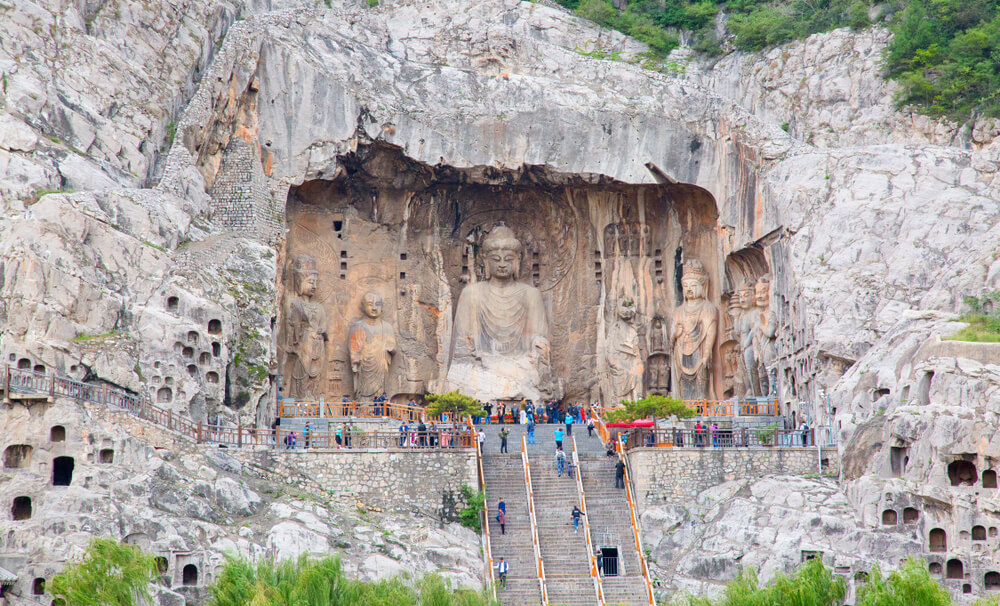Exploring China’s Sacred Burial Sites: From Terra Cotta Warriors to Imperial Mausoleums

China, a land rich in history and culture, holds a deep reverence for its ancestors, and this respect is vividly displayed in its sacred burial sites and cultural relics. From the famed Terra Cotta Warriors of Xi’an to the elaborate imperial tombs scattered across the country, China’s burial sites are a fascinating intersection of art, history, and spirituality. These Chinese tombs and mausoleums offer a glimpse into the country’s dynastic past, providing insight into the lives, beliefs, and traditions of the Chinese people through the ages.
What You Need to Know About Cultural Relics in China
- Cultural and Spiritual Significance: China’s sacred burial sites, such as the Terra Cotta Warriors and the Ming Dynasty Tombs, are more than just tourist attractions—they reflect deep spiritual beliefs and traditions, showcasing a profound reverence for ancestors and the afterlife.
- Art and Architecture: These burial sites feature intricate art and architectural designs that serve both spiritual and aesthetic purposes, highlighting the connections between the human world and the divine, as seen in the grandeur of the Ming Tombs and the detailed murals at the Tomb of the General.
- Diverse Burial Practices: From the imperial tombs of powerful rulers to the more personal burial sites of military leaders, ancient China’s burial practices varied greatly, each reflecting different social classes and their relationships with death and the afterlife.
- Legacy and Continuity: These sacred sites also emphasize the belief that death is not the end but a continuation of influence and legacy, with tombs, statues, and carvings acting as enduring symbols of power, protection, and remembrance across generations.
Chinese Tombs and Mausoleums
Let’s look at some of the most popular sites from several dynasties – from the terracotta warriors to the Longmen grottos.
The Terra Cotta Warriors: Guardians of the Afterlife
Arguably, the most famous burial site in China is the mausoleum of China’s first emperor, Qin Shi Huang, located near the ancient capital of Xi’an. Discovered in 1974 by local farmers, the Terracotta Army consists of over 8,000 life-sized clay soldiers, along with bronze chariots and horses, all designed to protect the first Qin Emperor in the nether world. The site dates back to the late 3rd century BCE, during the Qin Dynasty when the emperor sought to unite China under one rule and protect his reign beyond death.
The Terra Cotta Warriors are not just a monumental feat of craftsmanship but also a symbol of the imperial power and obsession with immortality that marked Qin Shi Huang’s reign. Each warrior is unique, with distinct facial features, clothing, and weaponry, reflecting the rich diversity of the emperor’s army. The tomb complex is vast, covering over 22 square miles, and it is believed that the emperor’s burial chamber remains untouched and undiscovered to this day. The Terra Cotta Army’s purpose was clear: to ensure that the emperor’s rule continued into eternity, a reflection of the centrality of ancestor worship and belief in the afterlife in ancient Chinese culture.
The Imperial Mausoleums of the Ming Dynasty
While the Terra Cotta Warriors are one of China’s oldest and most iconic burial sites, the imperial tombs of the Ming and Qing Dynasties (1368–1644) offer a glimpse into the grandeur and sophistication of later imperial burial practices. The Ming Dynasty Tombs, located north of Beijing, house the remains of 13 out of 16 Ming emperors. These tombs are not just burial sites; they are grand architectural and spiritual statements built with a firm adherence to Confucian principles of harmony, order, and respect for the cosmos.
The Ming Tombs are renowned for their meticulous design, including a symbolic layout that mirrors the Chinese belief in the connection between the human world and the divine. At the heart of the site is the Chang Ling tomb, which belongs to Emperor Yongle, the ruler who oversaw the construction of the famous Forbidden City. The tomb complex features impressive structures, such as the Spirit Way, a path lined with statues of animals and officials, guiding the emperor’s spirit to the afterlife.
The architecture and artistry of these tombs reflect both the opulence of the Ming Dynasty and the spiritual significance of death. The emperors were buried with numerous treasures, and the structures surrounding their tombs were designed to protect and honor them in the afterlife. The site is a reminder of the Ming emperors’ belief that their power, wealth, and legacy would continue beyond their mortal lives.
The Tomb of the General in Luoyang: A Gateway to Ancient Burial Practices
Moving from imperial tombs to those of military leaders and lesser-known figures, the Tomb of the General in Luoyang provides a fascinating look at how burial practices varied across different classes and professions. Located near the ancient capital of Luoyang in Henan Province, the tomb is believed to belong to a general from the Western Han Dynasty (206 BCE–9 CE). This tomb is unique in its preservation of ancient burial art, with murals and sculptures that depict the general’s life and the religious practices of the time.
The tomb features intricate carvings that showcase military life and divine protection, suggesting that even generals were expected to have their afterlife carefully arranged to ensure their continued influence. The murals inside the tomb depict scenes of battle, horses, and chariots, along with mythological figures that symbolize protection and guidance. This site reflects a more personal approach to burial, where the deceased’s achievements and connections to the divine were commemorated in the art and architecture of their tomb.
The Longmen Grottoes: Sculpted Eternity
While not strictly a burial site, the Longmen Grottoes in Luoyang are an incredible example of the spiritual and artistic traditions associated with ancient Chinese burial practices. Carved into the cliffs along the Yi River, the grottoes are home to over 100,000 Buddhist statues, including some of the most intricate and awe-inspiring works of art from the Northern Wei (386–534 CE) and Tang (618–907 CE) Dynasties. Though the site primarily served as a Buddhist pilgrimage destination, many of the stone carvings were placed there as offerings to ensure the spiritual well-being of the deceased.
A Glimpse Into China’s Spiritual Landscape
China’s sacred burial sites are much more than resting places for the deceased; they are vibrant cultural landmarks that reflect the country’s deep-rooted traditions of ancestor worship, spiritual beliefs, and respect for power and legacy. From the mighty Terra Cotta Warriors to the serene Longmen Grottoes, each site tells a unique story about China’s complex relationship with life, death, and the afterlife.
By visiting these awe-inspiring burial sites, travelers not only get a chance to appreciate China’s rich history and cultural heritage but also tap into the deep, enduring reverence for life and death that has shaped Chinese culture for centuries. Each tomb, sculpture, and statue is a testament to the belief that death is not the end but a transition that should be honored with as much grandeur as life itself.
As you contemplate your own final resting place, consider the benefits of a private, family mausoleum. With the help of Eternal Mausoleums by Forever Legacy, you’ll create a lasting place for your progeny to visit to reflect, pray, and meditate, and your family’s unique contributions will be celebrated and preserved. Request a consultation to learn more about this one-of-a-kind memorial option.

